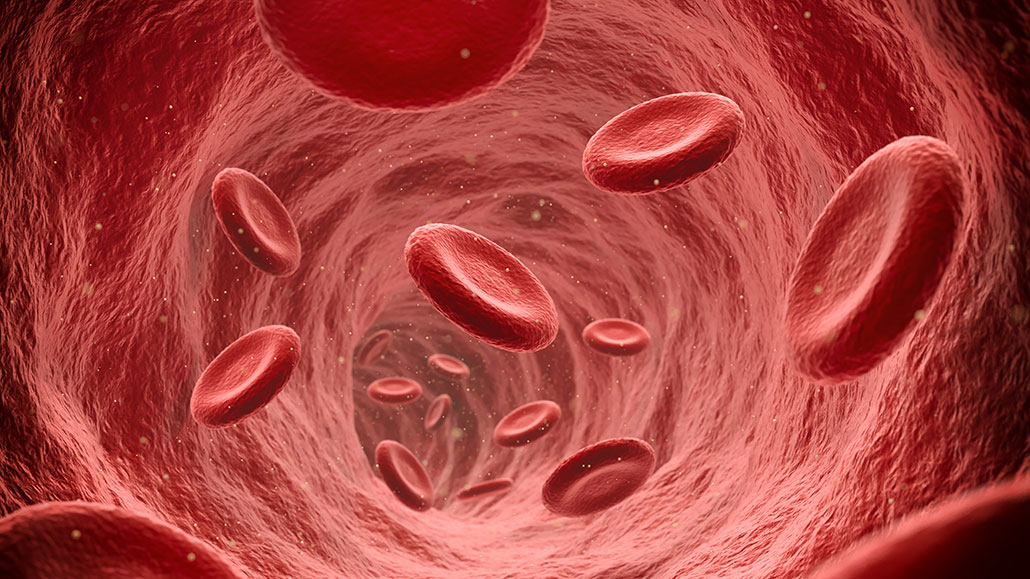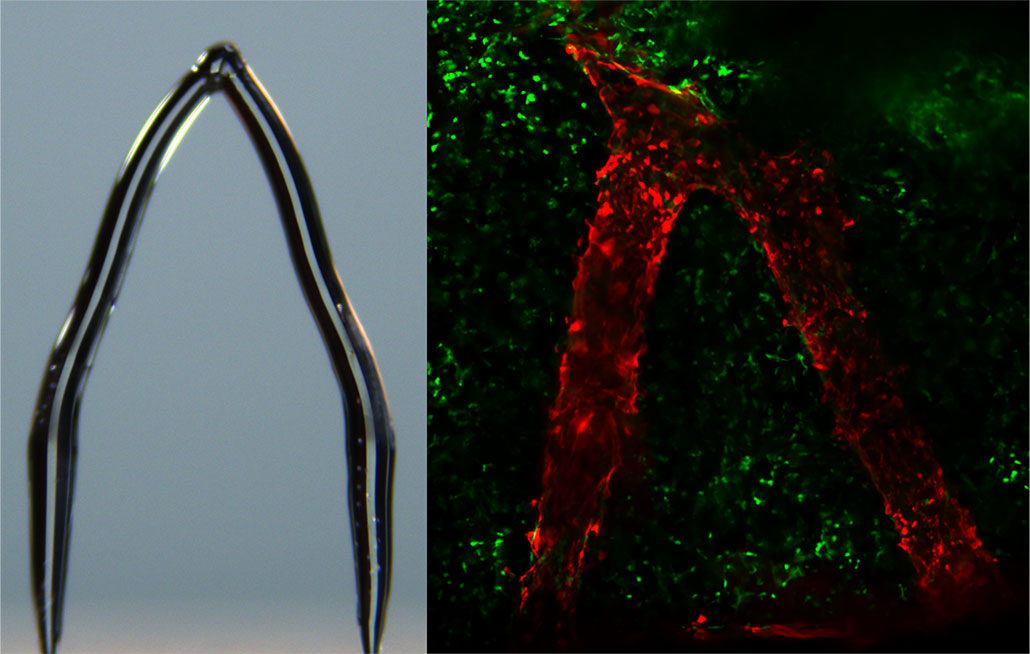The movie Frozen inspired the icy, 3-D printing of blood vessels
It could be a step toward one day ice-sculpting lab-grown organs

Vessels carry oxygen-rich red blood cells to tissues throughout the body, as in this artist’s representation. Researchers hope to make artificial organs but need synthetic vessels to support them. In the new work, ice serves as a template for these lab-made vessels.
ExperienceInteriors/E+/Getty Images
Share this:
- Share via email (Opens in new window) Email
- Click to share on Facebook (Opens in new window) Facebook
- Click to share on X (Opens in new window) X
- Click to share on Pinterest (Opens in new window) Pinterest
- Click to share on Reddit (Opens in new window) Reddit
- Share to Google Classroom (Opens in new window) Google Classroom
- Click to print (Opens in new window) Print
By Sarah Wells
Superhighways of vessels beneath our skin transport blood and nutrients. These natural pathways branch out like tree limbs to help our body move food and oxygen to our organs. Our bodies make vessels naturally, but bioengineers also want to make them artificially. And now a team of engineers has found a cool new way to do that in the lab: They use ice.
The idea was actually inspired by the ice magic in a Disney movie, says Burak Ozdoganlar. He’s a mechanical engineer who’s leading the new vessel-building project at Carnegie Mellon University. It’s in Pittsburgh, Pa.
“Frozen was what gave us the idea that we can make amazing shapes [using ice],” he explains.
Think about “how Elsa makes the ice castle,” says Feimo Yang. “She just waved her hand and made the [huge] castle.” Of course, the reality is much different. For one, “we need this huge machine to make a tiny, little castle,” he says. Yang, a PhD student, works with Ozdoganlar.
Yang described his team’s work on February 13 at the Biophysical Society Annual Meeting in Philadelphia, Pa. Some of the work was also published in Advanced Science.
Such vessels could one day help create lab-grown organs. But blood vessels are very delicate and have been hard to make outside the body. If the new method works, it could help support lab-made organs or ways to test new medicines. One day, artificial vessels might even replace damaged ones in people with cardiovascular disease.

Tiny ice sculptures
To make the vessels, the engineers first needed a template or mold from which to build the tissue. “Originally, we were trying to do this with wax,” Ozdoganlar says. But wax proved “too soft,” he says. “And it’s not necessarily biocompatible,” or suitable for use in the body. Then they thought of Elsa’s magic.
Ice seemed like a good alternative for many reasons. It costs little and is readily available. And since it’s non-toxic, the body won’t reject it.
Printing the ice template is simple. First, engineers program its shape into a 3-D printer. The printer then drops water onto a very cold surface, where it freezes instantly. How cold? Try -35° Celsius (-31° Fahrenheit). The printer repeats this process until the vessel’s shape is complete. In all, it takes less than 30 seconds.
This icy vessel template is then encased in gelatin. Shining ultraviolet light on the gelatin hardens it as the ice melts away. What’s left are realistic-looking channels for blood to move through.
“It’s like using Play-Doh,” Yang says. “The ice is like the mold. And Play-Doh will be whatever material [here, the gelatin] that you make the channels into.”
The new research is “quite interesting … and exciting,” says Warren Grayson. But it also has limitations, he adds. Grayson is a biomedical engineer at Johns Hopkins University in Baltimore, Md. He works on similar projects but did not take part in this research.
In the ice-vessel project, he notes, “you can see that all these structures are pretty small.” Their size is limited by the very cold temperatures used, he says. Larger structures would not stay cold enough as a result of heat transfer.
“I wouldn’t necessarily say [the new work] will transform the field of tissue engineering,” Grayson says. “But it does provide another dimension that you can use to create structures.”
Do you have a science question? We can help!
Submit your question here, and we might answer it an upcoming issue of Science News Explores
Testing medicines and more
So far, the Carnegie Mellon team has tested its gel channels with endothelial (En-doh-THEE-lee-ul) cells. These are the cells that line the inner walls of blood vessels.
In one experiment, those cells survived two weeks lining the artificial vessels. This is promising, but there is still a long way to go before such replacement vessels could be transplanted into people.
In the future, such synthetic vessels could be used as part of lab-made organs to save the lives of people urgently awaiting donated organs for transplant.
Ozdoganlar and Yang are also excited about testing medicines on these blood vessels.
“There is a push … to have better models of diseases and tissues to use in drug development,” Ozdoganlar says. The new vessels might be tested with a drug being developed for use in people. Such tests might even use artificial blood vessels seeded with some of your own cells. This could show how your body might react to the drug.
Says Ozdoganlar, “This is really a game changer.”
This is one in a series presenting news on technology and innovation, made possible with generous support from the Lemelson Foundation.







